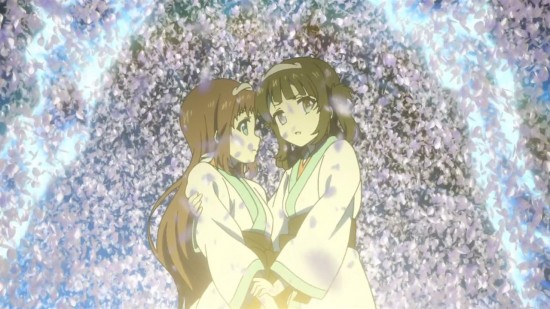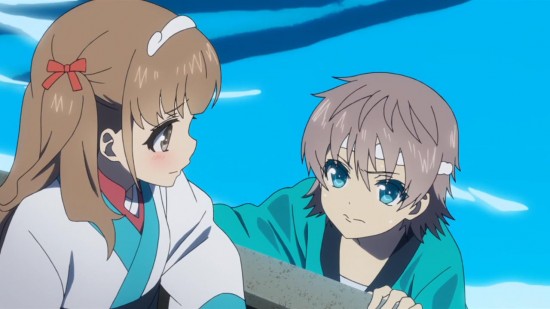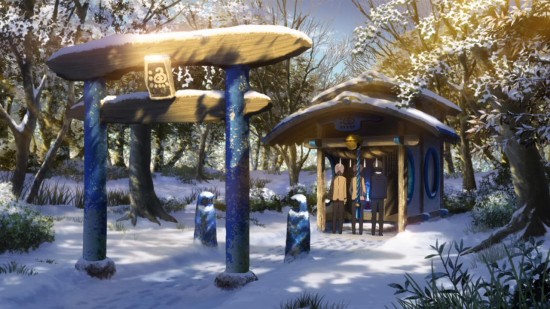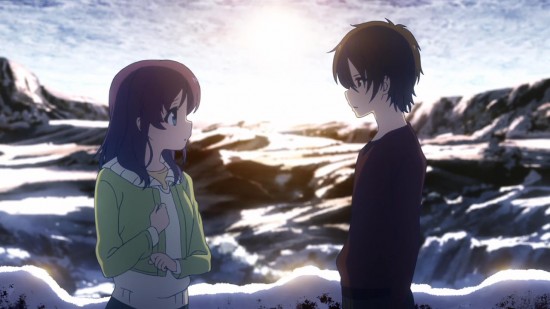I enjoyed Nagi no Asukara (Crunchyroll) but it’s not perfect. It has some pacing problems. Of course that’s common with Japanese TV shows. Hopefully you have some overall story to tell, but you have to organize it into one or two cours, each consisting of 12 or 13 episodes of 24 minutes each. For ratings reasons each cour should end at a dramatic high point and each individual episode must be interesting enough to keep people watching, all while advancing the overall plot.

A very small number of shows do it perfectly. Nagi no Asukara has some great episodes, but also a fair number that drag.
But now it’s time to look back and evaluate the series as a whole. I think it’s pretty good. It has an innovative premise, terrific artwork, likeable though flawed characters and a story with real emotional resonance. But not everyone likes it and I quite understand why it isn’t to everyone’s taste.

First, you have to accept this for what it is: a complex fairy tale, not a serious drama or a work of high fantasy. The show makes this pretty clear from the beginning with its deliberate use of “magical unrealism” and shout-outs to The Little Mermaid.

(Actually the ending seems more influenced by the classic Japanese tale of Tarou Urashima and other stories involving Ryuujin, the dragon king of the sea.)

The middle part of the story suggests that we are going to get some sort of parable about global warming, but that’s a red herring. It’s really a parable about the nature of love, with an ending that’s not exactly tragic, but not entirely happy either.
Disconcertingly Show ▼

There’s also the fact that the main characters spend a lot of time acting like a bunch of 14-year-olds. OK, they are 14 years old so I guess I’ll have to let that slide.

Anyway it’s probably unreasonable to expect the characters in a love story to display a lot of wisdom and rationality. If any of the characters in Romeo and Juliet had even a modicum of sense there would have been no story.

It’s often fun to examine the names of the characters in Japanese stories to look for symbolism that would be obvious to Japanese viewers who know the kanji. Lets try it here and see if anything makes sense:

Sakishima family:
- Tomoru: lamp, torch.
- Akari: light, illumination.
- Hikari: light. (Clearly there’s a family tradition here.)
- Akira: clear. (His father would have named him, and he chose something that sounded like “Akari”.)
Others
- Manaka: middle, center.
- Chisaki: (written in hiragana) probably either “small spirit” or “wise/enlightened spirit.”
- Kaname: pivot, cornerstone, keystone.
- Tsumugu: spinning (thread).
- Miuna: “beautiful sea.”
- Sayu: “hot water.”
- Uroko: scale (on a fish).
- Ojoshi: Presumably a title: honorific prefix + joshi (“girl”).

